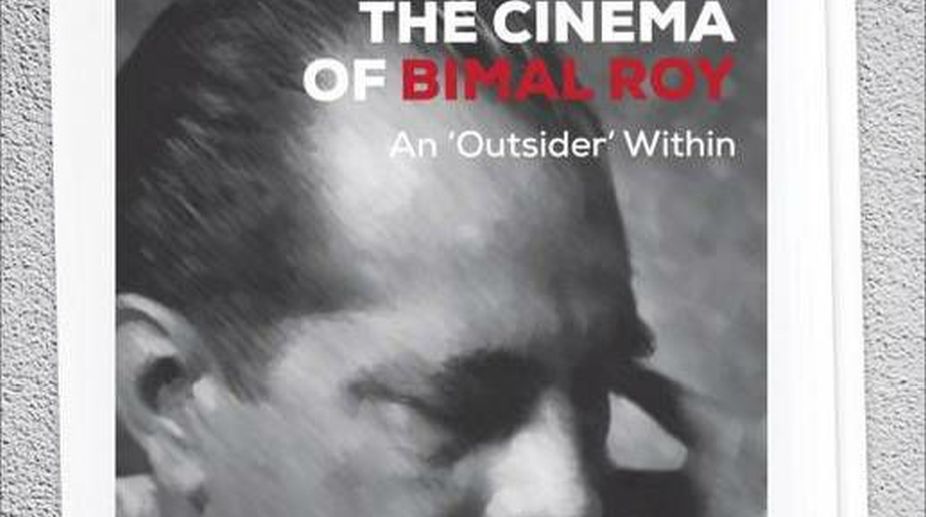In the Preface to the book, Shoma A Chatterji tells us on a personal note that it is a humble tribute to a filmmaker who formed a major slice of her growing up years. She grew up in Bombay with close interactions with the director’s family and had also been a house guest for some time.
The reason for writing this book might be a moral obligation on Chatterji’s part, but for scores of film lovers she has done yeoman service in bringing to our attention a director whose contribution to Indian cinema cannot be overestimated and yet someone who has not till now received the critical acclaim as some of his contemporary directors have received. Beginning his filmmaking career in Kolkata under the aegis of New Theatres in 1944 with the path-breaking Bengali film, Udayer Pathey, Bimal Roy subsequently moved to Bombay and directed several remarkable films during the period, which came to be known as the Golden Era of Hindi Cinema.
Advertisement
This was the period in the 1950s when directors like Mehboob, Guru Dutt and Raj Kapoor had mesmerised the audience. But Roy’s cinema, his style, treatment, approach and presentation were unique in defining the filmmaker without bringing in any comparative analysis of his cinema and the cinema that came after Satyajit Ray made his historic debut.
By the time of his untimely death in 1966, Roy directed 15 feature films and four documentaries. He also produced some films under his Bimal Roy Productions banner, which he did not direct himself. Chatterji rightfully reminds the readers that this was the black-and-white magic era of Bombay cinema when story ruled supreme, the actors had to fit themselves into the story, and the director was the superhero.
At the time, there was almost no experiment done with the form of the cinema and all challenges and explorations were attempted through and within the storylines themselves. Chatterji believes that a strong reason why the “auteur” in Bimal Roy is both acknowledged and recognised is that his films connote unity rather than diversity and conformity rather than non-conformity, and explore variations within symbiosis and harmony.
Studied individually, his directorial oeuvre might appear to differ from one film to the next, but when looked at closely, analysed in depth, placed in perspective and studied in retrospect, they bring out “a pattern of performance” of a single director’s vision that has stood the test of time.
In three subsequent chapters Chatterji then discusses Roy’s films under different genres, making us aware that his choice of subject of each film was quite different from the run-of-the mill films of the time. Talking of literary adaptations she discusses in details films like Udayer Pathey, Do Bigha Zaminand Baap Beti. Roy was successful in being able to integrate neo-realist influences with the traditional trappings of the Hindi melodrama. We are all aware that the critical success of Do Bigha Zamin paved the way for the Indian New Wave.
The success of Madhumati, though it does not fall exactly within this neo-realist genre, but is one of the earliest films on reincarnation, also added new feathers to his cap. Since Roy almost always relied on Bengali literature for the subject of his films, we have several films based on the novels of Sarat Chandra Chattopadhyay, namely Parineeta, Biraj Bahu and Devdas.
The treatment of women and their representation in the cinema of Bimal Roy deserves focus because none of the women in his cinema fall within a patriarchal reading. Coming to the woman question we have films like Sujata and Bandini. While in Sujata we have the question of untouchability dealt in a very humane way, Bandini is the first Hindi film to depict the story of a woman prisoner imprisoned for life for a murder she committed and confessed to without making any plea for forgiveness or harbouring any sense of guilt. In Indian cinema, music and songs are understood to function as an additional source of entertainment to raise the commercial value of the film at the box office.
But this is not their only function. Music and songs in Indian films serve to reinforce, alter and/or augment the emotional content of cinematic narrative. In a separate chapter entitled “The Role of Music, Song and Dance,” Chatterji informs us that the music and songs in the cinema of Bimal Roy are extremely versatile in their representation of different schools of Indian music.
If Roy could visualise songs that would become trendsetters for eons to come in the way they were shot, his music directors like Sachin Dev Burman and Salil Chowdhury were equally involved in the whole process of visualising the events in the film. In the summing-up section of her text Chatterji poses a rightful question as to whether Roy was a displaced “outsider” or not. If his films are any indication, he was not. Though they deal with stories of displacement in different forms and how the characters in them cope with it, he believed that cinema could and should perpetuate social messages and reform.
He had no desire to initiate any social change himself, but his films, without raising slogans or holding flags, spread this need for social change or raised existential questions on why change should not happen to people like Shambhu in Do Bigha Zamin, who decided to go to Calcutta to earn money to repay his debt. But for him, there was no coming back. If the cinema of Roy can be placed in perspective, one might qualify it as being unquestionably democratic in story, language, characterisation and incidents. Also his cinema does not address or revolve around what may be termed the “privileged class”.
The filmography at the end of the book compiled by Sounak Chakraverti is a very valuable addition to trace the career of Roy and assess his entire oeuvre. Before concluding one has to point out that the production quality of the book is really marred by the exceptionally small font that the publishers have used.
One cannot proceed to read the text at a normal pace because it hurts the eyes after reading a couple of pages. This wasn’t expected from a notable publishing house like Sage, which probably wanted to save some pages to keep this paperback edition low priced and affordable. Hope this lacunae is rectified in future editions of this very informative and wellresearched book.
(The reviewer is professor of English, Visva-Bharati University)











